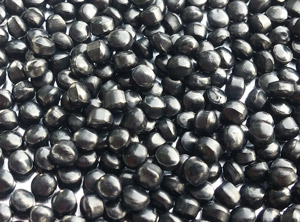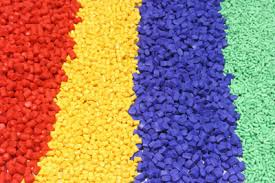LUDWIGSHAFEN, GERMANY, January 29, 2018 – Effective today, or as contracts allow, BASF will increase prices for pigments, dyes and preparations by up to 15% percent worldwide. The price increase will affect all market segments, predominantly the coatings, plastics and printing industries. Price adjustments are necessary due to higher raw material prices e.g. for pre-cursers of pigments and dyes, as well as increased costs for regulatory efforts like registration, environmental, health and safety.
About the Colors & Effects brand
The Colors & Effects brand encompasses BASF’s well-known expertise in colorants and effect pigments for the coatings, plastics, printing, cosmetics and agriculture markets. Fueled by entrepreneurial spirit, BASF’s experts enable innovation and growth. For our customers and our company: We live colors. We boost effects. For more information about the Colors & Effects brand, visit www.colors-effects.basf.com.
About Masterbatch:
Masterbatch (MB) is a solid or liquid additive for plastic used for coloring plastics (color masterbatch) or imparting other properties to plastics (additive masterbatch). Masterbatch is a concentrated mixture of pigments and/or additives encapsulated during a heat process into a carrier resin which is then cooled and cut into a granular shape. Masterbatch allows the processor to colour raw polymer economically during the plastics manufacturing process.
The alternatives to using masterbatches are buying a fully compounded material (which may be more expensive and less open to e.g. color variability of the product), or compounding from raw materials on site (which is prone to issues with achieving full dispersion of the colorants and additives, and prone to preparing more material than what is used for the production run). In comparison with pure pigments, masterbatches require more storage space and their lead times are longer. Another disadvantage is additional exposure of heat (“heat history”) to both the carrier and the additive; this may be important e.g. for marginally thermally stable pigments.[1]
As masterbatches are already premixed compositions, their use alleviates the issues with the additive or colorant clumping or insufficient dispersion. The concentration of the additive in the masterbatch is much higher than in the end-use polymer, but the additive is already properly dispersed in the host resin. In a way their use is similar to uses of ferroalloys for adding alloying elements to steels.
The use of masterbatches allows the factory to keep stock of fewer grades of the polymer, and to buy cheaper natural polymer in bulk.
Please read more from the “SOURCE”
About BASF
At BASF, we create chemistry for a sustainable future. We combine economic success with environmental protection and social responsibility. The approximately 114,000 employees in the BASF Group work on contributing to the success of our customers in nearly all sectors and almost every county in the world. Our portfolio is organized into five segments: Chemicals, Performance Products, Functional Materials & Solutions, Agricultural Solutions and Oil & Gas. BASF generated sales of about €58 billion in 2016. BASF shares are traded on the stock exchanges in Frankfurt (BAS), London (BFA) and Zurich (BAS). Further information at www.basf.com.














